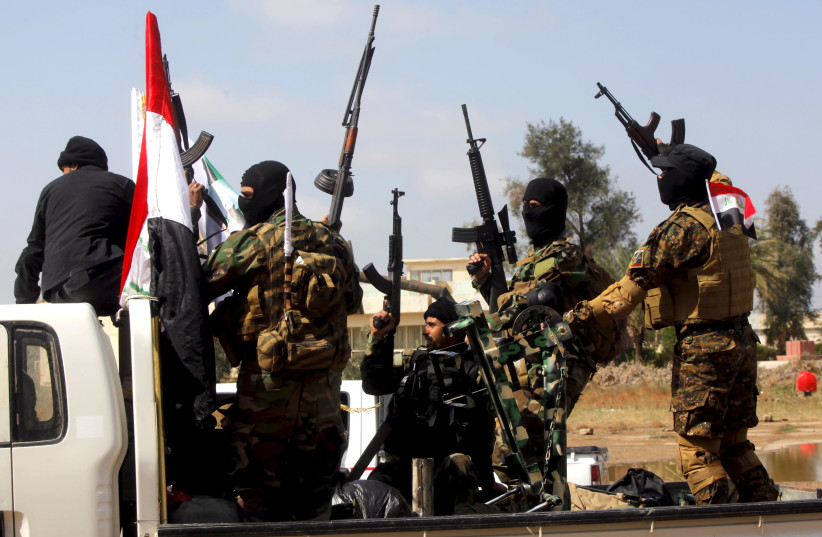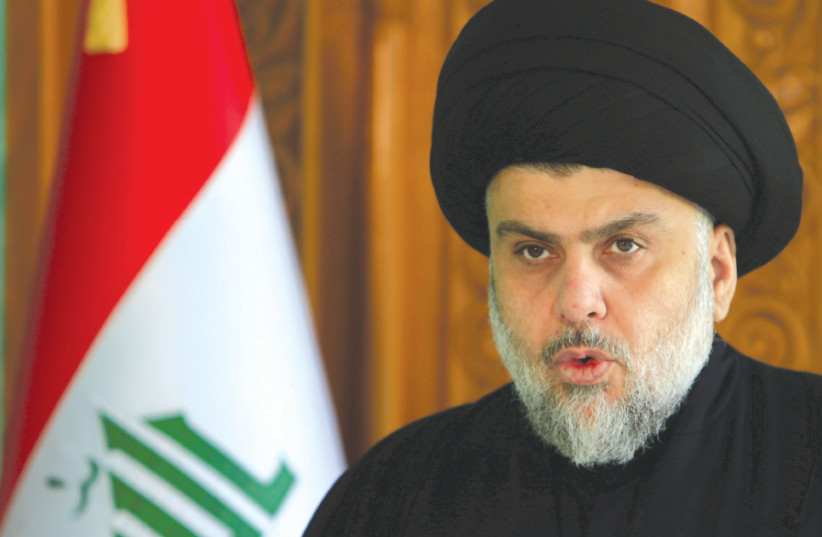For 24 hours, it appeared Iraq was slouching toward a kind of civil war.
Protesters had stormed the center of Baghdad where the presidential palace and parliament are located, an area called the Green Zone. This is also an area where embassies and other vital sites are found. Rumors swirled that the US, which has a large embassy, was evacuating its personnel. Gunshots were heard. By nightfall, the situation had gotten even worse with gun battles taking place and reports of a dozen protesters killed.
But who was shooting who and what was happening?
The spark for the protests was the sudden retirement from politics of Muqtada al-Sadr, a cleric and populist political leader. In the last several years he has commanded the largest political bloc in parliament and he also has a large militia force. But he has walked away from parliament in the last months in protest at the country’s corruption and inability to form a government. This failure stems largely from his own inability to broker deals, but he has pointed fingers at forces larger than his own looming over the Green Zone. Thus the frustration of his followers always takes the form of protests occupying parliament or storming the Green Zone. Something similar happened at the end of July and also in 2016.
The protests on August 29 appeared different. First, there was the symbolism of the people entering the presidential palace and swimming in the swimming pool. Some compared this to protests that toppled the government in Sri Lanka. But Iraq’s government can’t be toppled. Iraq has no real functioning government to topple. Although there is a prime minister, Mustafa al-Kadhimi, he is not able to control most of the country. In addition, the president is a largely ceremonial role.
Instead, Iraq is governed by sects, religious leaders and ethnic groups. There is an autonomous Kurdistan region in northern Iraq; the one stable and peaceful area of the country.

Iraq: A country at war with itself
As the protests appeared to turn violent, and there were rumors that pro-Iranian militias would also intervene and attack the protesters, some sought shelter in the Kurdistan region. Iraq went into curfew but in Erbil, the capital of the Kurdistan region, there was no such emergency. Instead, people wondered what might come next and whether violence would spread to other cities such as Basra and Kirkuk.
The current violence and chaos are part of the tragedy of Iraq. The country has been at war for decades; first under the tyranny of Saddam Hussein when he fought Iran in the 1980s and then in 1990 when he invaded Kuwait and plunged Iraq into ruin by fighting a US-led coalition. Poverty and sanctions followed in the 1990s until the US invaded in 2003. The brief respite after Saddam was removed didn’t last long. Soon, an insurgency, led by jihadist groups rooted in Sunni cities like Fallujah, spread throughout the country. The US fought the insurgents but also clashed with Sadr’s supporters, who were then known as the Mahdi Army. Sadr at the time was a younger rabble-rousing cleric. The US also had to contend with pro-Iranian groups armed by the IRGC, such as fighters linked to Abu Mahdi al-Muhandis and Qais Khazali.
When the US left Iraq in 2011 the country fell into the hands of the authoritarian pro-Iranian leader Nouri al-Maliki. His rise to power was due in part to the US which believed Iraq needed a more centralized government. Since the Sunnis were out of power, the pro-Iranian groups were the only available choice. But this didn’t lead to balance, instead, it led to abuses. While Iraq’s government is supposed to be structured like Lebanon's, with different ethnic groups holding different offices, such as a Kurdish president, Shi’ite Prime Minister, Sunni speaker of parliament, in essence what the US left behind was something worse than Lebanon; more sectarian and lurching toward civil war. When the war came in 2014 it was in the form of ISIS-led genocide against minorities and a vicious war that destroyed a swath of Iraq.
When the war on ISIS ended in 2017 in Iraq the country then faced a referendum for independence among the Kurds. Kurds had suffered genocide under Saddam and also had been abused by Maliki and the pro-Iranian groups. Many of them and those in their autonomous region, preferred to live free from the tragedy of the rest of Iraq. But Haider Abadi, the Prime Minister at the time, would not allow Kurdistan to seek a new path. Instead, he was encouraged by the Iranians and IRGC Quds Force head Qasem Soleimani to break the Kurdish resistance. He sent tanks into Kirkuk and the Kurdish region was isolated. The US also let it be known they would not stand by the Kurds, and the Turks, who had backed Erbil in the past, were also non-plussed.
The weakening of the Kurdish region gave pro-Iranian militias, called the PMU or Hashd, more power. They enriched themselves at checkpoints and ingrained themselves in the Green Zone, securing funding as paramilitaries and securing jobs in the Interior Ministry. By 2019 the militias had orders from Iran to launch a war against US forces in Iraq and they began with rocket attacks. This has escalated to drone attacks. At the same time Iraqis began to protest corruption in Iraq. Elections didn’t bring respite and the pro-Iran militias suppressed protesters, massacring dozens. This led to the appointment of the current Prime Minister Kadhimi. However, Kadhimi has not been able to solve Iraq’s endless crises and tragedies.

Sadr has proven he cannot govern Iraq
Some have had hopes that Sadr, winning the largest number of seats in parliament, might form a coalition with the Kurds and Sunni parties and create a non-sectarian government. However, Sadr has proved that he cannot govern.
He has backing from the Gulf, according to rumors, and some in the US even see him as an Iraqi “nationalist” who might save Iraq from Iran’s tentacles. But this is more myth than reality. Sadr is close to Iran and often travels there. He is not anti-Iran. He is not the nationalist something he can be.
He is also not responsible. Every time he gets close to power he throws a tantrum and leaves office or threatens to quit politics or retire or leave the country. He has done the same thing this time. His followers are willing to die to support Sadr and whatever his cause is but he has often left them in the streets, abandoned. This is what happened again on the last day. His followers clashed with security forces and others and some were killed.
Sadr announced a hunger strike to stop the violence. “His Eminence Muqtada Al-Sadr’s call to stop violence is the epitome of patriotism and respect for the sanctity of Iraqi blood. His speech emplaces national and moral duty upon all to protect Iraq and stop political escalation and violence and, to immediately engage in dialogue,” said Kadhimi. Nothing was accomplished.
Iraq lurched into crisis again, as it does every month.
People who require basic services are once again abandoned. The Iranian militias continue to control swaths of Iraq and extort people and threaten them and also use Iraq to attack the US, Israel and others. For instance, the US assessed that a drone attack on US forces in Syria likely came from Iraq. Iran uses Iraq as a platform to threaten the region.
The violence and chaos in Baghdad only help Iran.
